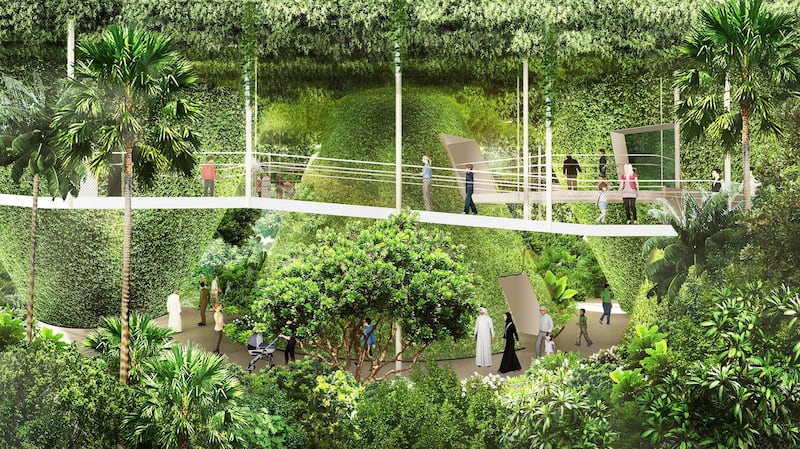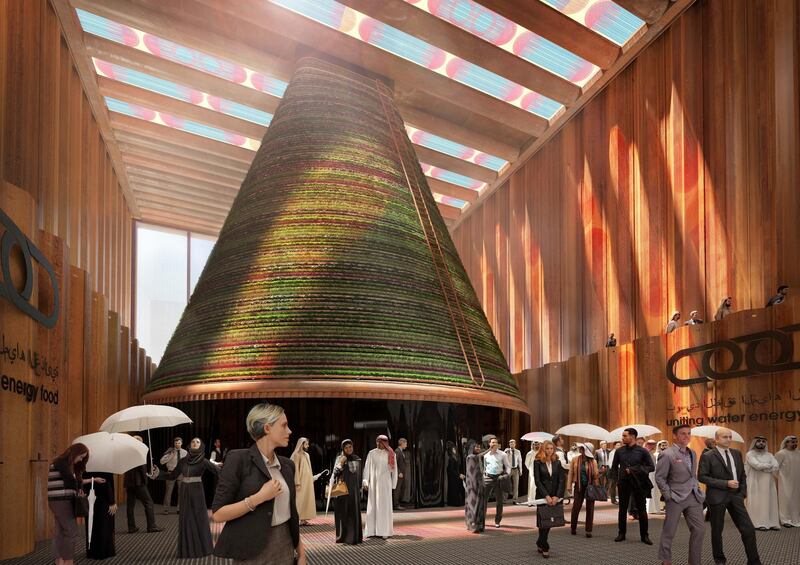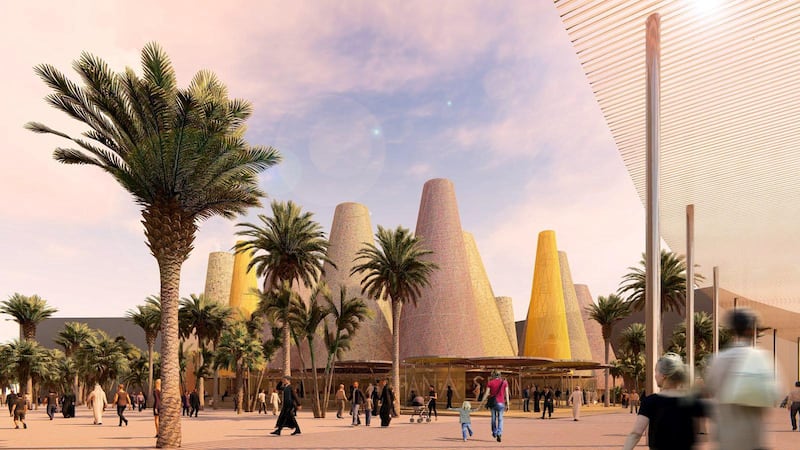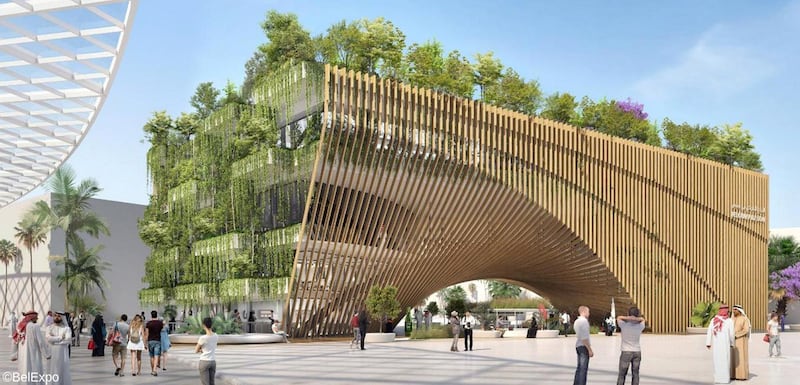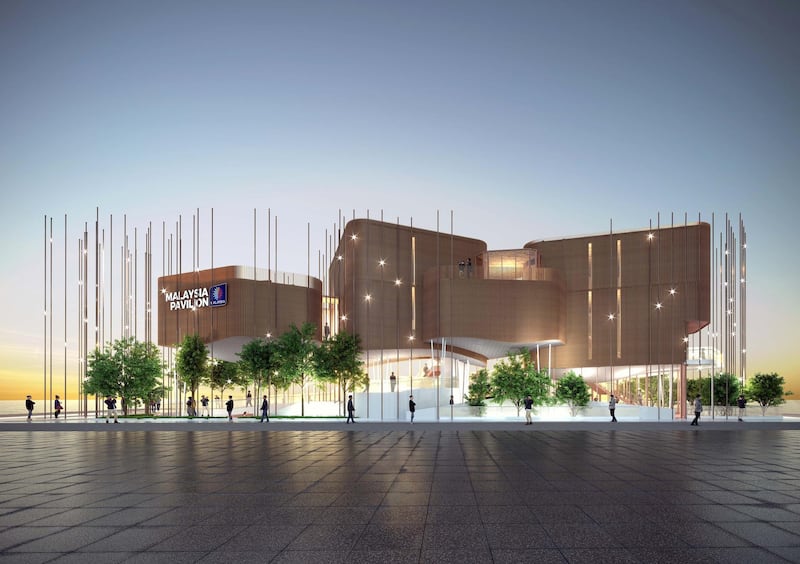In the vast Expo 2020 Dubai site, its skyline dominated by towering glass and steel structures, lies a message of sustainability.
When organisers were planning Terra – the Sustainability Pavilion, the brief was to build a large structure, open to the public, that generated its own electricity and cooling in the middle of the desert.
The result is a sustainable building that will become a science centre after Expo 2020 ends.
As scores of pavilions in Dubai South take shape before the event opens in October, the theme of sustainability has been carried through to many of the country’s structures.
Here The National takes a look at five of the greenest pavilions visitors will see.
Singapore
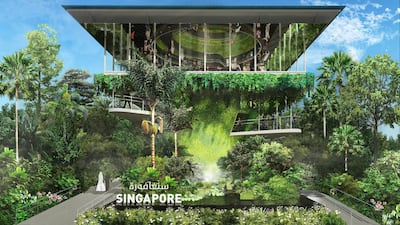
Singapore’s pavilion will be one of the greenest at Dubai Expo 2020.
Featuring hanging gardens, exotic flowers and lush rainforest plants, its energy use will be net zero.
The building’s roof will be covered in 500 solar panels, which will meet its energy demands.
There will be no air conditioning, with plants and dry mist fans used instead to keep the pavilion cool.
A pond filled with plants will suck pollutants from the air, while solar power will be used to desalinate groundwater for irrigation and to create mist.
Even the food waste will be turned into a clean odourless wastewater that can be recycled.
Trees planted along the border are designed to cut off direct sunlight and offer protection from desert winds, while sun pipes will capture light from the roof and funnel it to more shaded spots.
Malaysia
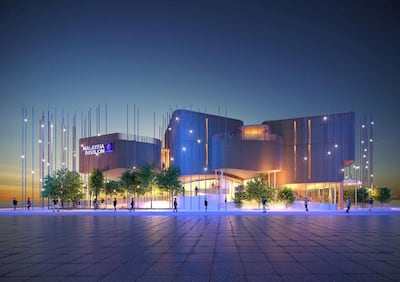
Malaysia’s pavilion will offset emissions produced in construction and operations, helping to make it carbon neutral.
Constructed mainly using meranti wood, from a tree native to south-east Asia, the building will showcase the country’s sustainable forestry policies.
A rainforest canopy, featuring trees, flora, fauna and a meandering river, will be the exhibit’s centrepiece.
Its sunken basement gardens and “floating” exhibition halls suspended on timber stilts and steel beams will tell the story of the urgent need to protect ancient trees.
About 40 solar panels on the roof of Malaysia’s pavilion will meet 10 per cent of the building’s energy requirements, while recycled water will be used to cool it.
Belgium
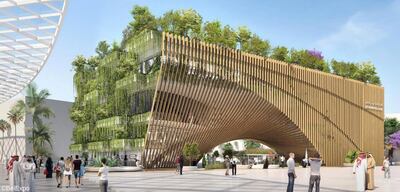
Belgium’s pavilion is a zero-waste building featuring various environmentally friendly design features.
A hanging garden with 10,000 plants will convert carbon dioxide into oxygen, storing 35 tonnes of carbon dioxide over the course of the six-month event.
The plants will also help reduce the temperature by 3-5ºC.
The building, which will feature a giant “green” arch made from natural materials, will maximise the use of water, daylight and renewable energy.
Netherlands
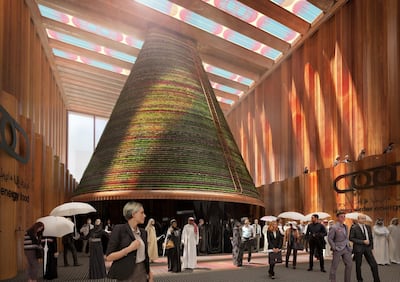
The power of nature will be showcased at the dazzling Dutch pavilion, which will house a vertical farm.
A giant cone blanketed with edible plants, cress and mushrooms will feature a solar-powered rain shower that captures moisture from the air.
The water in the “rainmaker” will be cooled with solar energy, to feed the plants and help cool the pavilion.
It will harvest hundreds of litres of water daily, which will be used to irrigate the plants.
The lounge’s floor and wall panels will be made by mycelium, a biodegradable fungi-based substance, to show how mushrooms can be used as a building material.
Spain
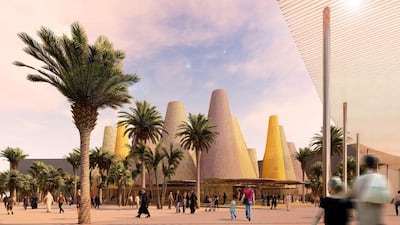
Spain’s eco-friendly pavilion is designed to showcase the country’s approach to sustainability.
There will be no air conditioning inside the building.
Instead, its 14 cones function as natural cooling towers, lowering the temperature inside by expelling hot air.
The pavilion will also feature a “forest of the future”, an artificial ecosystem built from organic and recycled materials designed to showcase other sustainable solutions.
It includes a feature that will react to the movement of visitors and adjust its colour after assessing visitors’ energy consumption habits.
